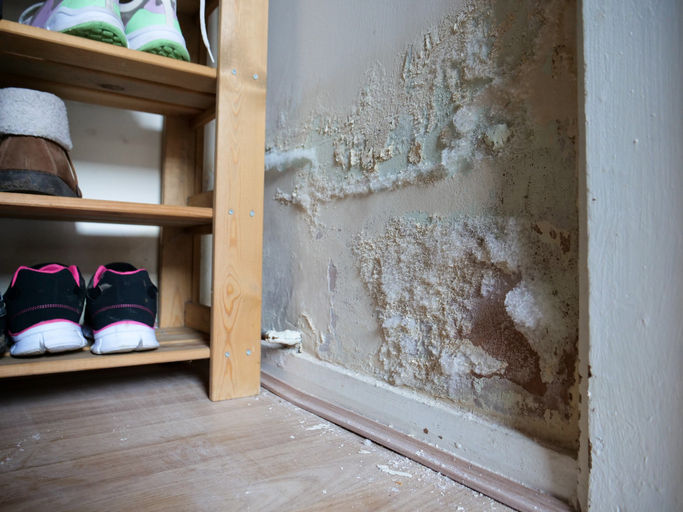How Water Damage Causes Mold Growth (And 7 Mold Prevention Tips You Need to Know)
- Admin UWDS

- Apr 29
- 2 min read
Updated: May 5

When water damage strikes your home — whether from a burst pipe, leaky roof, or unexpected flood — the clock starts ticking. Mold growth can begin within just 24 to 48 hours after water exposure, turning a small problem into a serious health and structural issue. Learning how water damage causes mold growth — and the best mold prevention tips — can save you thousands in repairs and protect your family's health.
Why Does Water Damage Lead to Mold?
Mold spores are everywhere, but they stay harmless until they land on damp, organic material — like wood, drywall, insulation, or carpet. Water damage creates the perfect conditions for mold to grow:
Moisture: Standing water, leaks, and even high humidity provide the moisture mold needs.
Food Source: Building materials are full of organic material mold loves to feed on.
Time: Mold colonies can establish themselves in as little as 24 hours if moisture isn’t removed.
Even small leaks under sinks or behind walls can cause major mold problems if left unchecked.
Health Risks of Mold After Water Damage
Ignoring water damage can cause serious issues. Mold exposure may trigger:
Allergies
Asthma attacks
Chronic respiratory problems
Skin irritation and eye discomfort
Beyond health risks, mold can destroy drywall, rot wood, and lead to expensive structural repairs if not caught early.
How to Prevent Mold After Water Damage: 7 Essential Tips
Preventing mold growth is all about acting fast and drying thoroughly. Follow these steps to protect your home:
1. Act Quickly
Start drying water-damaged areas within 24 hours. The sooner you begin, the lower the chance of mold growth.
2. Dry Completely
Use fans, dehumidifiers, and ventilation to dry not just the surface, but deep inside walls, floors, and carpets.
3. Remove Water-Damaged Materials
If drywall, insulation, or carpet can't be completely dried within 48 hours, it's safer to remove and replace them.
4. Disinfect Surfaces
After drying, clean hard surfaces with mold-killing cleaners like a diluted bleach solution or commercial antifungal products.
5. Control Indoor Humidity
Keep your home’s humidity levels below 60%, ideally between 30%–50%. Use a hygrometer to monitor indoor moisture levels.
6. Repair Leaks Immediately
Fix leaking pipes, roofs, and appliances at the first sign of trouble to prevent slow moisture buildup.
7. Monitor for Signs of Mold
Keep an eye out for musty smells, discoloration on walls, or new allergic symptoms — these can be early signs of hidden mold.
When to Call a Professional for Water Damage and Mold
If the affected area is larger than 10 square feet, has reached drywall or if you suspect mold inside your walls or HVAC system, it’s best to call certified remediation specialists. Professionals have the tools and experience to safely remove mold and fully dry your home.
Final Thoughts: Understanding how water damage causes mold and using these mold prevention tips can protect your property and your health. If in doubt, act fast and don’t hesitate to get professional help — the cost of early intervention is far less than repairing major mold damage later.



Comments